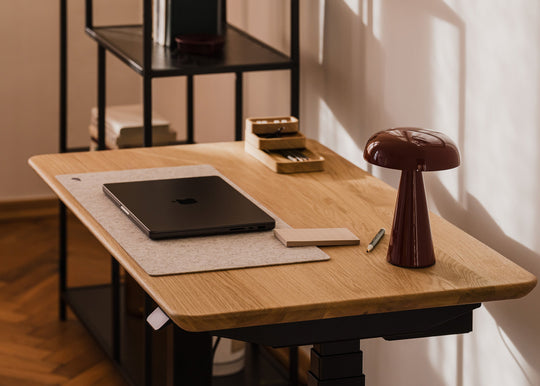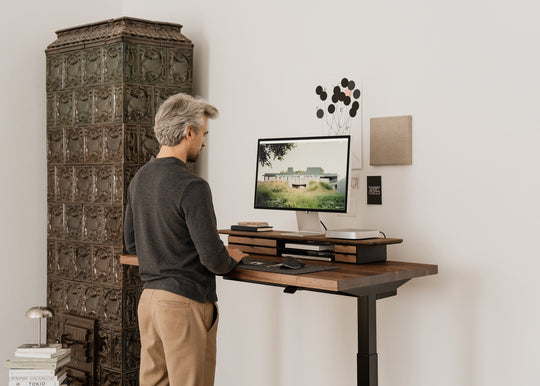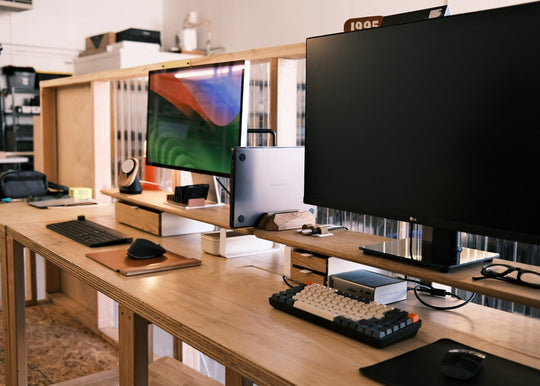
Remote work in the fall according to the Oakywood team
Shorter days, cloudy skies, gloomy weather – the fall season doesn’t give us much incentive to be productive, especially working from home where the comfy couch and a cozy blanket tempt you to binge-watch a series. How can you motivate yourself to steer away from the sofa and towards your home office? The Oakywood team has plenty of experience in the area and we want to share our tips with you.
Task assignment and communication
1. Asana
Asana is our primary tool for work organization: it allows us to log our assignments, set deadlines, and manage our projects and marketing calendar all in one place. One of the standout features of this app is being able to add attachments and comments to each task which lets us gather all communication and essential files concerning a particular project under one post. You can also choose the priority and task dependencies attachment to instantly see your most pressing tasks to easier organize your workday. Bigger, more time-consuming assignments can sometimes seem like an insurmountable obstacle. By breaking them down into smaller sub-tasks, you can make them more approachable and ensure you remember all the details.
2. Notion
Although we don’t use it as intensely as Asana, Notion stores our general information such as work organization, the company’s mission and goals, strategies, and processes, as well as files regarding employee benefits, onboarding, vacation days, etc. Notion also helps us pool content ideas and references which we use to write blog posts.
3. Slack
We use Slack as an organizational but also team-building tool. Apart from discussions on certain projects and tasks, it is a space where we can chat more freely, recommend vacation or workation destinations, share interesting articles, and geek out on tech-world news. Despite living and working remotely hundreds of kilometers away from each other, we are constantly connected which helps build a strong team and positively impacts our work.
4. Google Meet
Written communication is not always enough – it is important to see your colleagues’ faces from time to time, even virtually through a webcam. Google Meet is a great, but not only tool, to hold online meetings – Zoom or Teams work equally as well. Regular face-to-face calls make it easier for us to discuss abstract topics and long-term strategies, help us get to know each other, and remind us that we work with fellow living human beings and not avatars and email addresses.

Photo by Bailey Alexander on Unsplash
5. Other tools
Apart from the above-mentioned apps used by the whole team, some members utilize other nifty tools such as time trackers which help monitor and analyze our work schedule and let us plan the day or week with ease.
Another way we stay productive is by using quick note-taking tools so that no thought or idea gets lost among the multitude of assignments and meetings.

Photo by Alexandru Acea on Unsplash
How to streamline working in a home office?
1. Creating to-do lists
The most straightforward solutions are often the most effective which is why making to-do lists is our favorite work organization method. The process itself provides a huge boost of motivation and helps in hitting the ground running. It allows you to think through the order of your tasks from the get-go, helps identify the most urgent ones, and figure out which tasks are the most time-consuming and which you can tackle straight away.
2. Personal approach
Working remotely makes you avoid adapting to the specific rhythm of the office. You can organize your work however you please, taking into account your own preferences and conditions. Take advantage! Reflect on when during the day your mind is most productive – early in the morning, before noon, or maybe in the evening – and plan your tasks accordingly.
Sometimes, instead of scrupulously sticking to the plan, it’s best to work intuitively and do what feels most appropriate for you at any given moment. It’s important to take breaks regularly, however, sometimes it’s better to stick to finishing a task or at least a sub-task before taking a longer, pressure-free break. Working out the best way to organize your assignments and picking the most useful tools for your tasks allows you to stay motivated and keep your productivity levels high. This will, hopefully, free up enough time for you to enjoy a leisurely walk before the sun sets on another short fall day – remember to take care of your work-life balance at any time of year.








